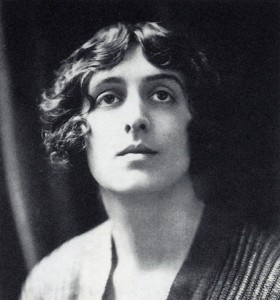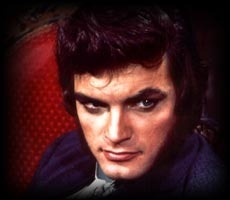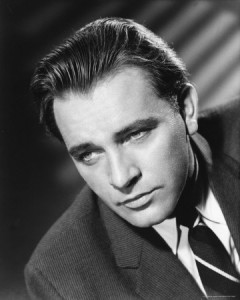Hannah Fielding's Blog, page 157
May 15, 2012
The ‘wicked’ stepmother
I notice that there are two competing versions of the classic fairytale Snow White coming to the big screen this year: Mirror Mirror and Snow White and the Huntsman. I can only imagine the frustration of the opposing movie studios when each realised the other was creating a major motion picture based on the same story…
What I recall most about fairytales such as this that I was told as a child is the wicked stepmother figure, who always brought chills down my spine. In both of these films major Hollywood actresses have been cast as the stepmother – Charlize Theron and Julia Roberts. Theron isn’t a stranger to gritty roles, but Julia Roberts is better known as the lovely, attractive heroine of romantic comedy films like Notting Hill and My Best Friend’s Wedding. Interestingly, Roberts has already explored what it means to be a stepmother in the Susan Sarandon film Stepmom, in which she played a woman stepping into the shoes of a dying mother.
In these two remakings of the classic fairytale, I don’t expect any careful exploration of the motives of a stepmother. The stepmother’s role in Snow White is simply to be the evil antagonist, out to ruin the beautiful heroine. But when I was writing my book Burning Embers, it did give me cause to consider the other side of the wicked stepmother character.
In Burning Embers, Coral is returning to the place of her birth, her father’s plantation, and leaving her mother behind her in England. She is bereaved following the recent death of her father, and the discovery that he had remarried and that she has a stepmother about whom she knows nothing is a rude shock. Worse, Cybil turns out to be beautiful, controlling and a rather youthful woman. Even worse, it appears she was having an affair. And worst of all, it appears that Cybil is involved with Rafe, the man with whom Coral is falling in love.
With so many angles to explore in Burning Embers, and wanting to keep the focus on the central story of the love between Coral and Rafe, I chose not to develop the character of Cybil in detail. She comes across in the book as unpleasant, jealous and possessive. But every author knows much more about a story and its characters in her mind than she writes on the page. And I have wondered about Cybil. What chance has she, in the mix, to be anything other than a ‘wicked’ stepmother? What drives her to desire Rafe so? Is she grieving? Is she lonely? Is she really wicked, or just sad and desperate? Will she ever find love herself?
I will leave you to make up your own mind about the stepmother in my tale, but one thing is sure: for Rafe, there can be only one fairest in the land. The question is, who will it be?
May 14, 2012
The Mpingo tree
My novel, Burning Embers, is set in Kenya in 1970. The heroine, Coral, was born in Mombasa, but when her parents separated she moved to London. Now, she is returning to her birthplace to take up her inheritance: mistress of her father’s plantation, Mpingo.
At the heart of Mpingo is her father’s architect-designed house – opulent, magnificent, beautiful. Nearby, a twenty-kilometre stretch of hot, white sands melting into the azure Indian Ocean. And to all sides of the house, gardens and acres of orchards in which grow the rare Mpingo tree.
Mpingo trees are also known as African blackwood trees (or if you prefer the Latin name, Dalbergia melanoxylon). They are beautiful: four to fifteen metres tall with lovely white flowers. The wood is reddish-black, and takes sixty years to mature.
In Swahili, Mpingo means ‘The Tree of Music’. It is so called because the wood is often used to make wind instruments of the highest quality, such as clarinets and oboes. The wood is highly valued, and commands a high price (around £12,000 per cubic meter). But due to exploitation of the trees in Kenya, trees are scarce and concern is growing about their survival. Two organisations now work to conserve the Mpingo tree: Mpingo Conservation & Development Initiative and the African Blackwood Conservation Project.
It seems fitting, to me, to situate the love story that evolves between Coral and Rafe amid these trees, the very epitome of the rawness of nature and the price paid for progress in Kenya in 1970. Mpingo reflects the fragility of the lovers, the vulnerability of their relationship in the hot, wild African setting – but also, ultimately, their strength, their hardiness and the beauty at the core of their love.
When I think of Coral and Rafe and Mpingo, into my mind wanders those poignant words from Captain Corelli’s Mandolin:
‘Love is a temporary madness. It erupts like an earthquake and then subsides. And when it subsides you have to make a decision. You have to work out whether your roots have become so entwined together that it is inconceivable that you should ever part. Because this is what love is. Love is not breathlessness, it is not excitement, it is not the promulgation of promises of eternal passion. That is just being “in love” which any of us can convince ourselves we are. Love itself is what is left over when being in love has burned away, and this is both an art and an accident. Your Mother and I had it, we had roots that grew towards each other underground, and when all pretty blossom had fallen from our branches we found that we were one tree, not two.’
May 11, 2012
The language of love
French, so they say, is the language of love. You may wonder why, then, when I speak and write fluently in both French and English, I choose to write in English.
As a child I grew up speaking French predominantly – which was easy for me because my governess, Zula, was part French. Though my parents encouraged me to learn English, and I duly learnt the language, I was more interested in French at first. I read French literature extensively at school, and my imagination and love of writing was stirred by classic authors like Victor Hugo, Honoré de Balzac, Gustave Flaubert and Molière.
Then, I entered my teenage years, and the world of popular culture drew me in. I moved on from sewing on the balcony of my living room while listening to classical musical. I discovered Elvis! My father began taking me to the cinema once a week with my sister, and I fell in love with a whole host of Hollywood movie stars. The English language became more romantic to me when spoken by these handsome actors and crooned by heart-melting singers.
Womanhood beckoned, and I donned my travelling shoes, exploring other cultures and myriad languages. Then, years later, I met my wonderful husband, an Englishman, and fell in love, thus fixing my destiny: to live in England. And I loved it – the patchwork of fields all around, the hopping of little rabbits down the lane, the scones and jam, the hazy sunshine, the windswept coast. Now that I was speaking English each day, my mind adjusted and I found myself thinking in English as well.
I wrote my first novel in French, and then had it translated into English. I wasn’t happy with the result, so I re-translated it myself. A lot of work!
From that point on, I decided to write straight into English, to find the poeticism in the English language first, rather than trying to wrestle with French phrasing to make it work so well in English. Usually, as I write these days I’m thinking the words in English before I write. But sometimes it’s a French phrase that sticks in my mind, and I struggle to find an English equivalent. One word in French can translate into three or four in English! And then there is the sheer beauty of the French language – the sounds, the rhythms – which can be hard to recreate in English (compare, for example, the sound of the French Il n’est rien de réel que le rêve et l’amour with its English translation: Nothing is real but dreams and love.)
I think because French is my first language, the one I spoke chiefly as a child (and I’m told I speak with a French accent still), it has a profound effect on my writing in English. It makes me think carefully about the vocabulary I select, because I want to ensure the meaning that’s in my mind comes through in the language. It makes me look closely at the structuring of sentences, which often differs across the languages. But most of all, I hope that I take a touch of what’s magical about the French language and infuse it into my English writing. For whatever language in which an author writes, for romantic fiction, she must use the language of love.
May 10, 2012
Clapping the net over the butterfly of the moment
Vita Sackville-West is famous for many things. She was the daughter of Lionel Edward Sackville-West, 3rd Baron Sackville, and his wife, Victoria Sackville-West. She was married to Harold Nicolson, a diplomat, journalist, broadcaster, Member of Parliament and author. She lived in Sissinghurst Castle, Kent, and created the beautiful gardens now opened to the public by the National Trust. And she and her husband, both bisexual and proponents of the open marriage, engaged in extra-marital affairs, the most remarked upon of which was Vita’s relationship with Virginia Woolf.
But above all, Vita was a writer, standing on the fringes of the Bloomsbury Group – the influential British writers working together in Bloomsbury, London, at the start of the twentieth century whose members included great minds such as John Maynard Keynes, E. M. Forster and Lytton Strachey and at whose core were Virginia Woolf, her husband, her sister and her brothers and her lovers.
The following quote, for me, really captures the essence of Vita’s understanding of what it is to be a writer:
‘It is necessary to write, if the days are not to slip emptily by. How else, indeed, to clap the net over the butterfly of the moment? For the moment passes, it is forgotten; the mood is gone; life itself is gone. That is where the writer scores over his fellows: he catches the changes of his mind on the hop.’
Oh, the exhaustion and agony of being a writer! To always have to write, for fear of losing a thought or a moment or a flash of inspiration. It’s no good having an idea and thinking you’ll jot it down later – there is no later; the mind, by then, is on to the next idea. The only solution, I have found, is to keep a notebook handy at all times. On the table beside you as you chat to friends or watch television or daydream. In your handbag while out shopping or travelling. In your pocket while out walking the dog. On your bedside table for middle-of-the-night ideas.
Perhaps that is why we writers can have a reputation for being aloof, hermit-like, distracted. We are living half in the moment, and half in our imaginations – desperate not to let a butterfly take flight and slip away from our grasp before we’ve established its beauty. Perhaps one day some clever soul shall invent a contraption that allows the writer to quickly place the idea in a safe place, ready to be accessed at a later stage, without requiring the frustratingly slow action of scribbling onto paper – something along the lines of Dumbledore’s pensieve. But then we would be deprived of the scratch of the pen and the smell of the ink and the cramp of the hand and the wonderful sense of words – words! – flowing out. No, to be a writer, I think, must be to catch the butterfly, and if the price we pay is notebooks strewn all over full of ramblings, so be it.
May 8, 2012
At home in France: View of the Gulf of St Tropez
View of the Gulf of St Tropez with a cruise liner in the distance. These cruise liners that go up and down the bay day and night have always made me dream. As the big picture window in my bedroom overlooks the sea, I am able to see from my bed those mysterious monsters gliding through the night. It is while watching one of those glowing liners that the seed of my opening chapter in Burning Embers was planted.
May 7, 2012
Favourite actor: David Selby
Elvis Presley, James Dean, Robert Pattinson, George Clooney, Leonardo di Caprio, Brad Pitt… all teenagers dream of talented and handsome actors, and as a young girl I was no different. There were many actors I admired whom I had seen on television and at the movies, but my favourite for a long time was David Selby. His dark hair and piercing, intense gaze made me melt – and a young David Selby is much how I imagine Rafe in Burning Embers to be.
When I was in my early teens, my mother had a black-and-white television in her room, and I would be allowed to watch drama series along with her and my sister. I first discovered David when he starred in the television series Dark Shadows, which was a wonderfully theatrical soap opera that was dark and dramatic. It was groundbreaking at the time because it explored paranormal themes like ghosts and werewolves and witches and time travel – deliciously thrilling to me as a teen. The series has become something of a cult sensation now, and a film version by Tim Burton and starring Johnny Depp opens this week. I don’t think I shall go to see it, though; it was always David Selby, not the spooky goings-on, that drew me in.
Years later, in the 1980s, David took a role in the soap opera Falcon Crest and I was delighted to be able to watch him on screen again. His character, Richard Channing, was set up as a villain, and David played him superbly. Over time, it became hard to dismiss the character as a ‘baddie’ because the depth of the acting meant you developed empathy with Richard.
Today, David Selby is in his seventies, but he remains a well-respected actor; indeed, in 2010 he was even asked to play Abraham Lincoln at the historic reopening of the Ford Theatre with the president of the United States, Barack Obama. With the new Tim Burton film release, interest in David Selby is bound to be renewed; and if you’re interested in Dark Shadows and its cast, I highly recommend Selby’s book My Shadowed Past, published in 2010.
May 5, 2012
The romantic nanny
In Burning Embers twenty-five-year old Coral returns home to her birthplace, a Kenyan plantation, where she is reunited with Aluna, her old yaha – her nanny from childhood. It’s a poignant reunion for the two, who were torn apart many years ago when Coral’s parents divorced. Coral allows Aluna to mother her, even imploring her to tell her a story as she falls asleep, safe and cosseted as a child.
But their relationship is not straightforward. Aluna is much older now, and in grieving for Coral’s father, whom she loved, she has become twisted and has fallen deep into superstition and witchlore. She is highly protective of Coral, and unwilling to believe the best of the man with whom she is falling in love, Rafe. Coral, on the other hand, is grieving herself, and is vulnerable and alone, which means she is grateful for Aluna’s affection and care. But a grown woman now, she is not prepared to allow Aluna’s opinions to sway her own, and she finds her yaha’s meddling irritating. By the end of the book, however, the two have found peace, and Coral and Rafe’s happiness mellows her so that she is glad that her little malaika has found a happy-ever-after.
Such a protective, motherly nanny seems the matter of fantasy, not reality – of Mary Poppins or governess Jane Eyre. But, in fact, Aluna’s character is based on fact, not fiction.
When I was growing up, I had a governess myself. My sister and I called her Zula, adapted for the ‘selle’ of ‘Maidemoiselle’ because that was all my young sister could at first pronounce.
Zula was a wonderful woman – kind, caring, giving, expressive, creative. And with so much Latin blood pumping through her veins from her French and Italian roots, she was an extremely passionate woman. She would tell us wonderful stories of her life before looking after us, full of love and loss and high drama. My mother would say that such tales were make believe, that she fabricated stories of her past. I didn’t care even if they were – she took us to such magical, romantic places with her tales – both those of her life, and those she would invent to please my sister and I.
Indeed, we reached the point where no other form of discipline was required to keep us in line than Zula threatening not to finish a story. She would stop mid-tale and tell us to wash our hands for dinner or tidy our bedrooms, and we would do just as were told, so desperate were we to find out what happened next.
Then Zula made a deal with me. For every story she told me, I had to relate one of my own. And so was born a lifetime of dreaming up stories, and so was born Burning Embers and the character of a much-loved nanny. Though I rather think, had Zula been in Aluna’s shoes, she’d have been less cautious and more excited about the romance unfolding before her! And my goodness she’d have cried at the wedding…
May 3, 2012
The day I unwittingly snubbed Richard Burton
When I was a girl my family used to visit a cabin in a place called Montazah. It was an idyllic spot away from the bustling city – woods, green gardens and the sparkling Mediterranean on our doorstep. My sister, my cousins and I would have a blissful time during the summer holidays, free to explore and find beautiful locations to dream up romantic stories, usually incorporating the actors and actresses of the era whom we admired.
One summer, when I was fourteen years old our stay at the cabin in Montazah coincided with an international film and television festival. My sister, my cousins and I watched with mounting excitement as sleek cars glided towards a grand hotel where a reception was to be held. Hiding behind a bush, we watched Hollywood icons emerge from the cars and enter the hotel – be still our pounding hearts!
Determined to see more, we marched up to the front door of the hotel – pink-cheeked, bright-eyed and dressed in our simple summer attire. The doormen, proper and formal, were not prepared to let us saunter past, and were determined to deny us access.
A reconnaissance mission revealed an open window at the back of the building. In we climbed, and proceeded to mingle with the stars of television and film – they in their evening dress; we in our shorts. To see them in the flesh, rather than on a black-and-white television screen or at the cinema, was simply amazing.
The actors we approached were friendly and gracious. My sister asked Roger Moore, whom we knew from the TV series The Saint, whether she could kiss him; his response: ‘But, baby, I’m married.’ Robert Conrad (Hawaiian Eye and The Wild Wild West) was dashingly handsome in the flesh, and signed an autograph.
But it was Gardner Mackay, star of Adventures in Paradise, that I most wanted to meet. I asked a man dressed in a tuxedo whether he knew where I could find Mr Mackay.
‘Why do you want to speak to him?’ the man asked.
I explained that I was a huge fan.
‘And what about me?’ he demanded. ‘I’m Richard Burton.’
I had no idea who he was, and politely took my leave. If only I had known!
May 2, 2012
Romance book cover art
I have recently discovered the social media site Pinterest, which allows you to collate your favourite images and share them with followers.
I think of myself as a visual writer – I’m inspired by things I see, and in turn I try to describe scenes carefully so that a reader can build a vivid mental image. So discovering a whole world of inspirational images has been illuminating indeed.
On browsing images, I stumbled across a romance book cover design that I liked, so I ‘pinned’ it. The cover got me thinking – was I the only reader/writer inspired by book cover art in the romance genre? A half hour on Google later I knew that I was a member of an international community of ladies who love romance cover art – how wonderful!
What is the attraction? Well, I am drawn to the vivid colours, the beautiful and backdrops and the romantic fonts. I love painted covers, and I also appreciate those based on photographs. But of course the central draw is the lovers depicted as the focal point of the art. It seems a romance cover designer’s imagination knows no bounds when it comes to variances of facial expressions and embrace positions.
What is most interesting is tracing the progression of cover art over the years. Compare an early Mills and Boon novel with Burning Embers and you see a big difference in style. But one aspect remains constant: the passion.
I belong to a group on Goodreads called Bodice Ripper Readers Anonymous, and recently I was engaged in a discussion on cover art. A participant suggested her ideal writing space would have wallpaper made up of hundreds of difference romance book covers. How colourful and inspiring. But I think I would become rather distracted by such a wall covering – I’d spend my time staring and daydreaming rather than writing!
If you love book cover art as well, I’d love to hear about your favourite covers. And you can follow me on Pinterest at http://pinterest.com/hannahfielding/book-covers-i-love/.
May 1, 2012
An interview with Hannah Fielding
The following interview was published on Omnific Publishing’s website.
Omnific: Burning Embers is set in such an amazing landscape that it becomes almost a character in the story. What was your inspiration for writing Burning Embers?
Hannah Fielding: Burning Embers began not as a story, but as a vivid landscape in my mind. The seed of the idea was sown many years ago when, as a schoolgirl, I studied the works of Leconte de Lisle, a French Romantic poet of the 19th century. His poems are wonderfully descriptive and vivid – about wild animals, magnificent dawns and sunsets, exotic settings and colourful vistas. Then, as a teenager, I went on holiday to Kenya with my parents and I met our family friend Mr Chiumbo Wangai who told me extensively about his beautiful country, its traditions and its customs. I was enthralled, and when I put pen to paper Burning Embers came to life.
Omnific: Given the descriptions and details in your story, I assume that you have been to Africa? Do you travel often and where is your favorite destination?
Hannah Fielding: I grew up in North Africa in a house overlooking the Mediterranean, and I loved nothing more than to learn about exotic, far-off places. After I left university, I travelled extensively to many of the places I had read about. Traveling still takes up a large part of my life, but mostly now I travel to the romantic places where my novels are set. The sun and the sea are always present in my travels and in my novels – they are a great source of inspiration for me. I find it difficult to decide on a favourite destination; it is usually the place in which my latest novel is set! But I think that Spain might be the country closest to my heart: the countryside, like its people, is rich and flamboyant and suits my passionate nature.
Omnific: Can you give us a little insight into your writing process? Are you a plotter and planner or do you just write as it comes?
Hannah Fielding: I am definitely a plotter and a planner. I love the planning phase of a new book. I spend a lot time researching places and cultures – reading books, listening to music, watching films and, when I can, visiting in person. I really enjoy the excitement of a new story taking shape. I try to set down a framework before I commence writing, but I don’t stick to it rigidly. Sometimes as I write the words flow out and take the characters somewhere unexpected, but intriguing! I am always writing in my head. In fact, I keep a notebook and a pen in my bag, and next to my bed (with a torch so I don’t disturb my husband). Anything around me can prompt inspiration for the novel in hand or a future story. A painting, a view, a ship gliding on the ocean in the night, houses, people in the street, in a restaurant or at the airport – anything and everything that prompts a romantic scene in my mind can trigger the muse.
Omnific: Since Omnific is all about the romance…what is your favorite romance scene of all time?
Hannah Fielding: Choosing a single scene in the profusion of romantic scenes that exist in literature, music and the world of cinema? That’s very hard! I think my favourite would have to be from the 1958 Spanish film La Violetera, a classic story of impossible love between Soledad, a flower girl, and Fernando, an aristocrat. Fernando, who is obsessed with family honour, ends their idyll. But then Soledad becomes a super star, and Fernando has a change of heart and decides that he can’t live without Soledad. So he goes to the theatre where she is giving one of her shows. Soledad spots him in the audience (he is in a box quite close to the stage) and she sings ‘La Violetera’, the song she used to sing when she was a flower girl in the street back when they first met and fell in love. Their eyes connect and he pales and leaves the box to find her backstage. This scene always brings tears to my eyes – even as I write now I am moved and I will probably take out the DVD tonight and watch it for the umpteenth time.
Omnific: Now, if they were to make that into a movie, who would you cast in the roles for that scene? (Or if it has already been made would you recast it?)
Hannah Fielding: The roles are perfectly cast: Sarita Montiel as Soledad is wonderful. She is beautiful and has the most moving voice. And Raf Vallone is superb in his role as the handsome, passionate aristocrat. I love French, Italian and Spanish cinema. The films are often low budget, but have brilliant plots and wonderful direction that creates very evocative films.
Omnific: Do you have anything new on the horizon?
Hannah Fielding: Yes, I have written a trilogy which takes place in Spain and which follows three generations of a family from the 1950s through to the present day; and I am in the middle of writing my next novel, which takes place in Venice and Tuscany, Italy, in 1980.








